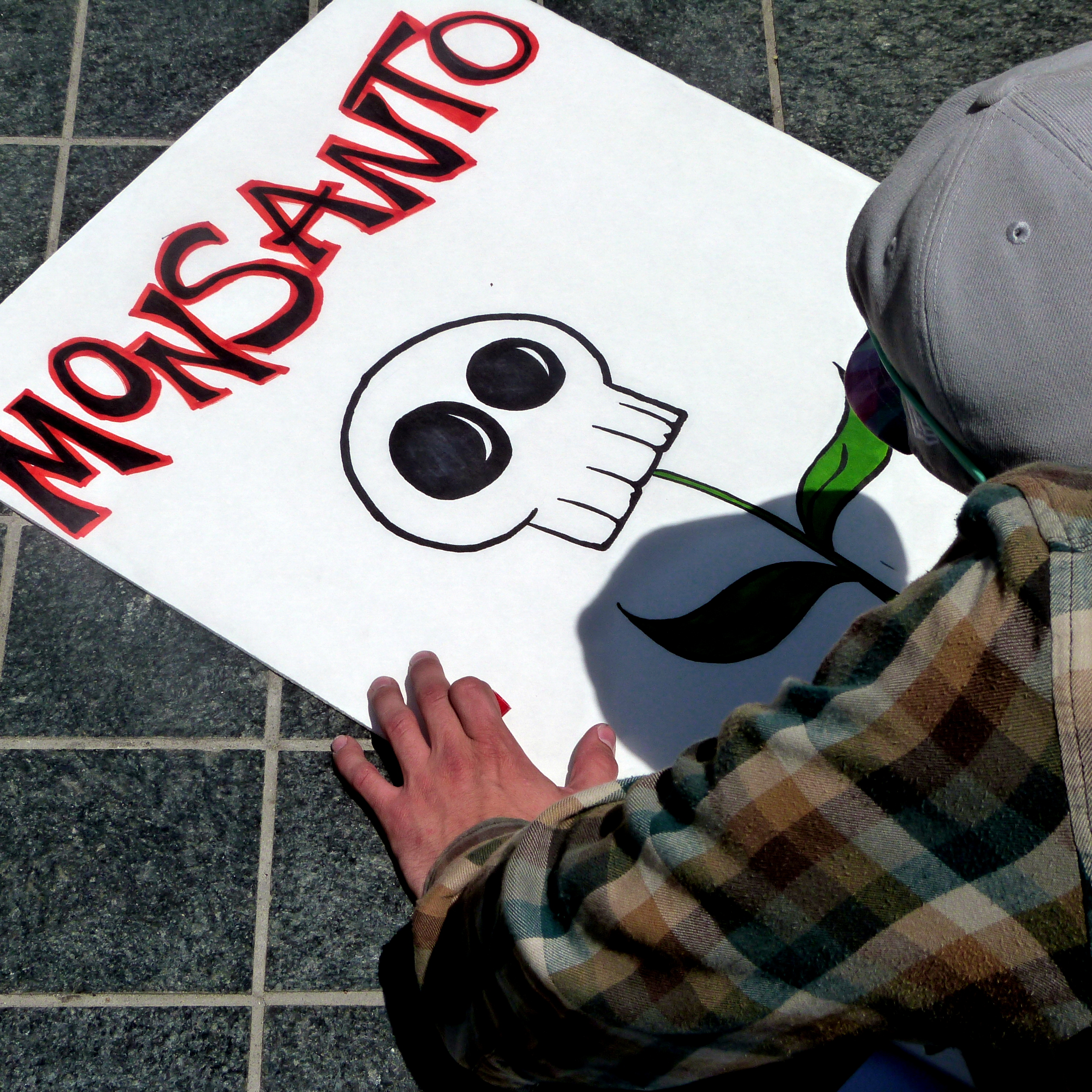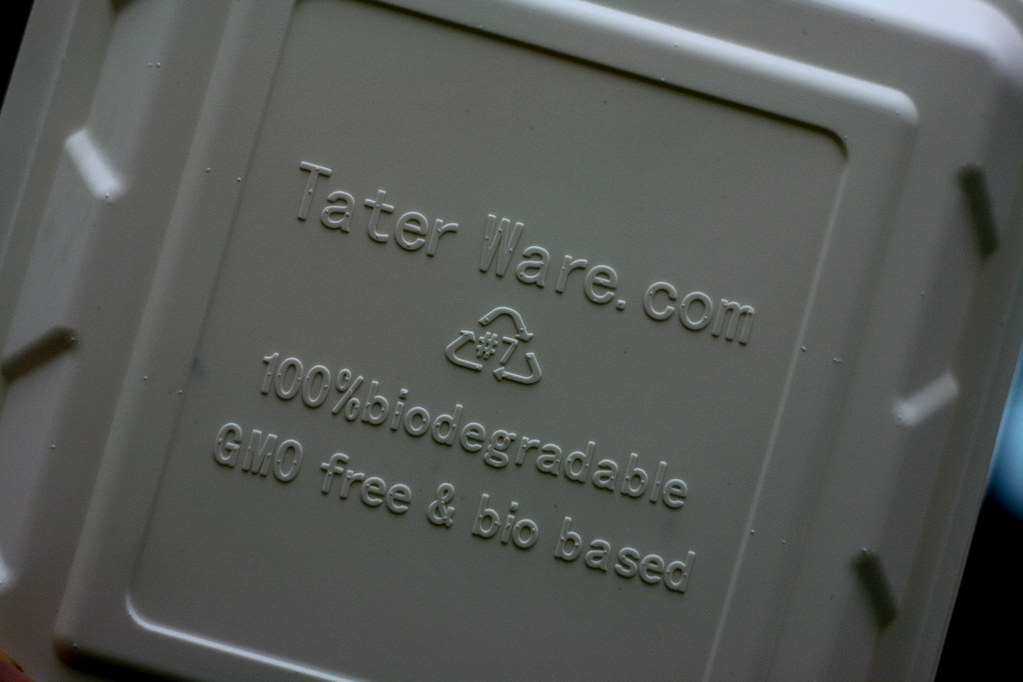 |
| http://commons.wikimedia.org/wiki/File:Golden_Rice.jpg |
So, I first learned about Golden Rice a few months ago, when I saw a viral video where a 14-year old girl who stood against GMOs was interviewed on CBC news (I'm going to miss CBC's coverage of the Winter Olympics this year... I don't think I'll be able to get it in CA). When the host asked her about the promise of Golden Rice, she said "Golden rice was scrapped because it didn't work. And in order for the average 11-year-old boy to get enough Vitamin A from rice he would have to eat 27 bowls of rice per day... The reason there is blindness isn't because there is a lack of Vitamin A in the rice, it's because their diets are simply rice."
So, what is "Golden Rice"? It's a grain of rice made by an eccentric food magnate as part of a contest, and if you get one, then you get to visit his biotech company. Hilarious! (I crack myself up sometimes...) Actually, Golden Rice is a genetically modified strain of rice that is not yet commercially available. It has been modified to produce beta-carotene, which is a precursor to vitamin A. Rice plants have beta-carotene in their leaves, but the endosperm (the white stuff that we eat) doesn't have any. Golden Rice has been modified with two genes that help the endosperm make beta-carotene: one gene is from the daffodil and the second is from a soil bacterium (all this information is brought to you courtesy of Wikipedia). The beta-carotene in the rice grain gives it a yellowish hue, which is why it's called "Golden Rice". In 2000, a paper was published in Science describing the grain of rice and mentions that Vitamin A deficiency is a serious health problem in at least 26 countries. WHO's numbers (World Health Organization) are much more staggering: Vitamin A deficiency is a public health issue in half of all nations. It leads to visual impairment and blindness, and significant increased risk for infection. Pregnant mothers are also at high risk during the third trimester when the demand for Vitamin A from the fetus and the mother are highest. As such, Vitamin A deficiency has been labelled by the WHO as the leading cause of preventable blindness in children: 250,000 to 500,000 vitamin A deficient children become blind every year, and half of them die within the first year of becoming blind. The purpose behind Golden Rice is to help improve diets by providing a rich source of beta-carotene for vitamin A biosynthesis, particularly since many regions with high rates of Vitamin A deficiency have rice as their primary staple.
Despite what is mentioned in the quote in the first paragraph, Golden Rice was never scrapped. A new strain of the rice (Golden Rice 2) was introduced in 2005, with 23x more beta-carotene. Golden Rice 2 replaced the daffodil gene with one from corn. So the project is alive and in full progress: the Golden Rice network has partners in numerous countries, and is supported by the International Rice Research Institute (IRRI). The partners work on performing field trials in their respective countries and work with local farmers to transfer knowledge and technology.
Sounds like a delightful project, right? Might even make scientists reconsider their Oaths. Next section focuses on arguments against Golden Rice and their validity.
A September 2013 opinion piece in Huffington Post raised numerous issues, and I'll go through them. But there are three primary concerns regarding the grain's efficacy in combating Vitamin A deficiency (the following section is quoted directly from the article, including the links):
- "After storing and cooking, will there be sufficient carotenoid levels left in Golden Rice to have an impact?
- How much remaining carotenoid will actually be "bioavailable" for already malnourished bodies to convert?
- And are there likely, unintended health and safety risks associated with consuming Golden Rice?
We don’t know the answers to these questions, in large part because the necessary studies have not been completed (two flawed and controversial studies notwithstanding). Or if they have been conducted, they have not been published or released for public and independent scientific scrutiny."
Point #1:
Storage:
I found a paper from 2006, published in a journal of a rice research institute in Vietnam. They found that the amount of beta-carotene decreased between 5-10% after 5 months, and that the beta-carotene was more stable at 4ºC. The paper is pretty basic and I had a few issues with it: first, they dehusked the rice right before using it. I'm pretty sure that in the "real world" that's not what will happen. I think most people worldwide buy their rice dehusked/milled. Second, the significance was fairly weak (but still there) and they should have really looked beyond 5 months. So I definitely agree that more studies are needed about the proper storage of the rice. (In discussing this with my boss, she pointed out that even if the amount of beta-carotene in the rice decreases by 50% in 6 months, isn't it better than nothing?)
Cooking:
There have been a few human trials that have been published where they had to cook the rice in order to eat it (duh). I was able to find two feeding trials, and most recent one was from 2012, where they fed Golden Rice to 68 children from China. The study found that the beta-carotene in Golden Rice was as effective as pure beta-carotene oil, and better than spinach, at providing vitamin A to children. So why does the article from HuffPo call the study "flawed and controversial"? Apparently, the researchers cut corners and didn't fully inform the parents of the children or Chinese regulatory agencies about the fact that the rice was genetically modified. But as sleazy as the researchers may have been, many believe that the conclusions of the paper remain valid. The scientists have since been sacked. So, I'd say that this one has been semi-demonstrated, although not under the best circumstances. Also, the findings indicate that the response given by 14-year-old Rachel Parent to CBC's Kevin O'Leary was highly inaccurate.
So why do I say "semi-demonstrated"? The two feeding trials that I found have both consisted of providing the subjects with cooked meals that had been steamed, frozen until use, and then heated in a microwave. Prior to cooking the rice was stored at -80oC, so it isn't exactly a "real world" scenario, although it was necessary for these particular studies to maintain uniformity amongst all subjects. As such, there's no data on what happens when the rice is fried, or the countless other ways of preparing rice, including rice pudding (yummmmm... BTW, if you've never tried Iranian rice pudding, you definitely should).
It's also important to note that these feeding trials could not be performed on animals since the metabolism of beta-carotene in animals is different. So an animal feeding experiment would not answer questions about vitamin-A conversion in humans, and a whole slew of different animal trials would need to be performed in order to get a vague understanding of the numerous aspects of beta-carotene metabolism.
Point #2:
The reason why this point is raised is that individuals convert beta-carotene into vitamin A at different efficiencies depending on a variety of different factors, including malnutrition and intestinal health (parasites, infections, etc). I imagine that human feeding trials (such as the one performed in China) will help answer these questions. But differences in the conversion of beta-carotene into vitamin A between different individuals would be an issue with any source of beta-carotene, whether it's from a GMO or not, right?
ADDITION SEPT 4, 2014: Note that this is an instance where a human feeding trial is actually needed, because the goal of the crop is to address a human nutritional deficiency. The argument against human feeding trials for current GMOs is that animal trials provide us with the answers we need, which have to do with safety.
Point #3:
According to the Golden Rice project's webpage, they will comply with the regulatory requirements of each nation where the rice will be used. Since it isn't available yet, it makes sense that the tests haven't been done/completed. According to the same webpage, standard allergenic tests have also been done (bioinformatic prediction). They also state that gene expression profiling has been performed, and I think it would go a long way if that data were made available (for more information on this test, please view this previous post). Additionally, the Golden Rice Project webpage notes that the rice has been backcrossed with local varieties of rice from different countries, so that the rice is adapted to each location. I'd speculate that it makes sense to perform these tests using the local variety that will be submitted for approval in each country. Maybe the authors are waiting to publish a huge paper at the end of their studies, who knows? However, if Point #3 is about GMOs in general, then there really are no grounds for the concern. As outlined previously, there are numerous long-term feeding studies in animals showing that there are no health impacts in eating GMOs (please read every entry in this blog for more details :) ).
Other concerns/complaints:
-This is just another way for Monsanto to make tons of money: the seed is not developed by Monsanto. The private partner in the endeavor is a company named Syngenta, who is making the seeds available for use freely, on humanitarian grounds. There's no Golden Rice-specific fertilizer or pesticide that needs to be used. Additionally, you can save seeds from one season to the next.
-There are better ways to address vitamin A deficiency: I'm sorry, but this is the lamest excuse ever. If the popular belief is that "the reason there is blindness isn't because there is a lack of Vitamin A in the rice, it's because their diets are simply rice" (quoted from the first paragraph), are you seriously going to change the diet of millions of people around the world? My rant on this is below.
My conclusion:
I think that Golden Rice has the potential to be a fantastic product. Potentially. It has the potential to benefit those who suffer from vitamin A deficiency, those who are at risk of developing it, as well as local farmers and traders. I think that there's still a ways to go, but that's understandable. I've always felt that the time and effort that science takes is grossly underestimated. For example, one of the projects I just completed consisted of a one month test to change an identical plastic consumable from one vendor to another. 1 month. For a piece of plastic. Now that I have the initial dataset, I have to start the project all over and go out till 3 months. In the end, the project will have lasted 5 months. For a piece of plastic from a highly reputable vendor. Keep in mind that this is a piece of plastic being used in a research environment where no humans/animals are at risk. So imagine how long it would take if my work were clinical in nature or subject to regulations. This powerpoint presentation by Syngenta (the private partner in the Golden Rice Project) outlines all the delays they've experienced in their research, including 2 years to transfer seeds from the Philippines to Vietnam. So I think it makes sense that they're still working on things. Yet according to numerous articles I've read, many feel that it's time to put Golden Rice aside because it has yet to deliver anything.
I have a few serious issues with the outrage over Golden Rice. A few months ago, anti-GMO activists vandalized a field of Golden Rice in the Philippines, allegedly setting back the study by a few months. Here's my beef: you can't complain that GMOs aren't tested thoroughly enough, and then destroy the progress being made in their testing. You can't state that Golden Rice has failed to deliver anything since its conception and that after many years of research it's "still stuck in the lab", and then hold-up its research or complain about the lack of thorough tests. Yes, there are many socio-economic factors involved in vitamin A deficiency and you can definitely argue that bio-enriching rice is not the best way to address the problem. If that's your argument, then go ahead and work on an alternative solution, but don't try to sabotage the ideas and potential improvements that others are working on. Alternative ideas that I've read about include providing vitamin supplements and teaching farmers how to grow leafy greens. Those sound like fantastic ideas. Go ahead. Start working on them. There's no reason why these efforts can't work in parallel to one another. Providing leafy greens and vitamin supplements would probably help prevent a whole slew of additional vitamin deficiencies. I'd like to believe that if Baby Boy and I were living in poverty and that we both suffered from malnutrition, that people looking into vitamin A deficiency would be trying any means at their disposal to help us out. So now it's my turn to ask: why hasn't it been done already? The alternative measures suggested are items that you could be working on right now or for the last 5 decades. If it's lack of funds and your argument is that Golden Rice is a "flashier" project with strong endorsements from the likes of the Bill and Melinda Gates Foundation, then perhaps there's a reason for that. Perhaps it's because, sadly enough, many realize that private funds are required for such endeavors and Golden Rice is the right fit to garner those funds. But as an individual raised in a developing nation, I can envision the logistical nightmare of getting vitamins into the hands of those who need it most or trying to convince populations to eat spinach when they aren't familiar with it. In general, products are most successful if they can be easily integrated into one's daily life and Golden Rice fits in this category.
According to the HuffPo article, the message we're being fed by the Golden Rice Project is to "swallow our technical fix, despite its failure to deliver on its promises, or you consign millions to misery and death." I don't think those are the two choices being offered. I think that the options are to keep quiet, embrace the Golden Rice Project's work, or to find an alternative solution and to work on it. I think that the message that the Project is also trying to convey is that roadblocks and baseless complaints won't help anyone. At least that's what I think they're trying to convey.
Biochica out.







